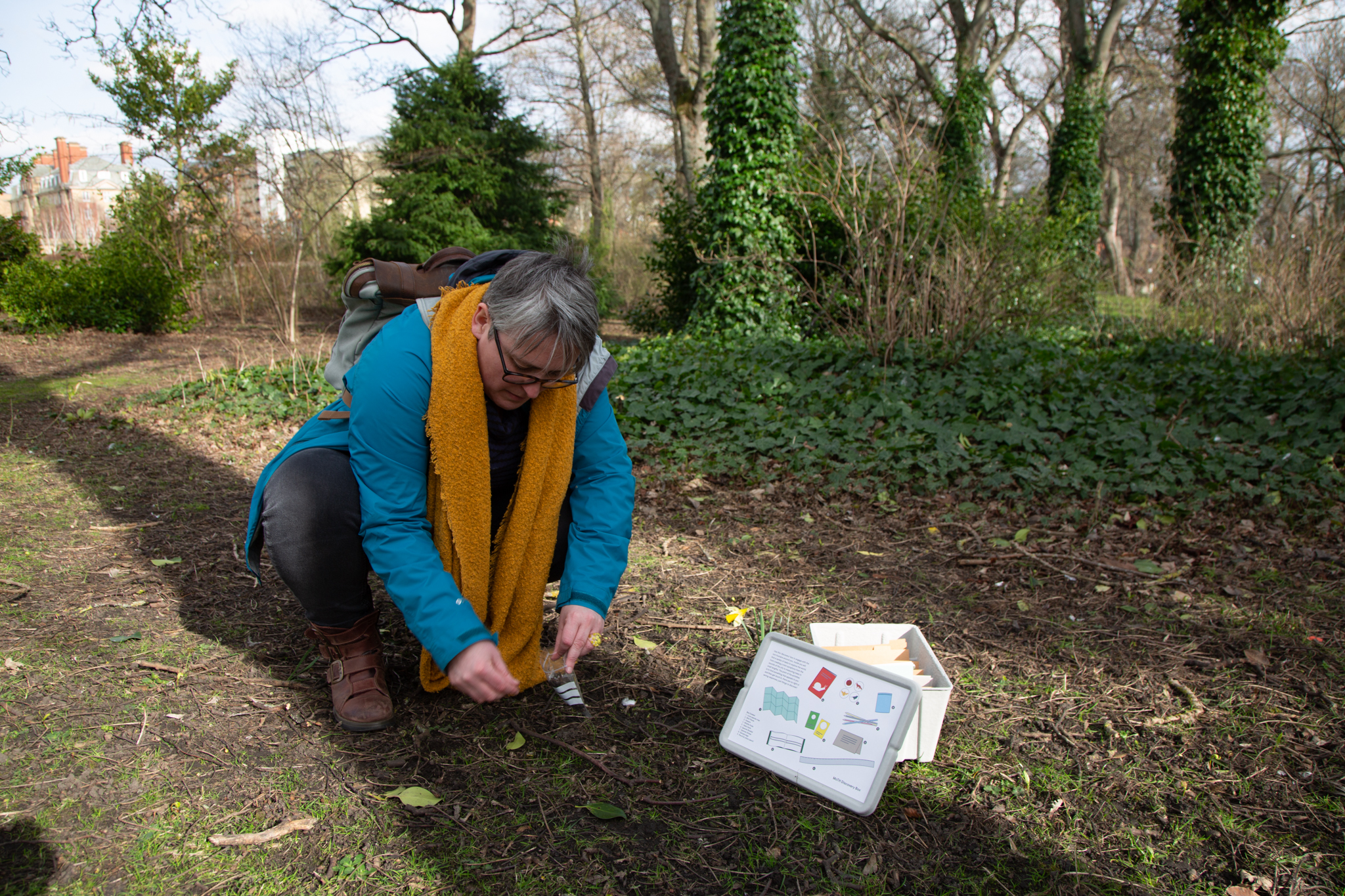Discovery Box
We have created a Discovery Box of ideas and probes generated in the workshops. While we hoped to launch the Discovery Box in December through a final event, we had to postpone due to Covid-19. We are, however, looking forward to wrapping up the project with an evening celebration of talks, demonstrations, multispecies games, live music, food and drinks amongst the plants, animals, and microbes that live and pass through Spitalfields City Farm in east London.
We would like to explore how the Discovery Box might be used by different people in their work and daily lives, as a way of expanding our relationships with other species in the city. We’re currently in discussion with new partners including the Natural History Museum, Royal Agricultural University, John Muir Award and Stomping Grounds Forest School to try out some of the resources. If you’re interested in trying out the box please get in touch with rachel.clarke@ncl.ac.uk or sara.heitlinger@city.ac.uk











Tools and materials you need to make a Discovery Box:
- Scissors or scalpel knife to cut paper
- pencils & colour pencil for of the box
- paper glue to make envelopes
- fresnel magnifier business card size
- sample bags
- box or container for all content (we used large pulp box from Midori)
Discovery Box Content
- Overview sheet (A4) print on any A4 sheet
- Local species map (A0) we recommend printing with a plan printer for low-budget print on uncoated paper
- Wild Pieces (A6) lay the pages out on an A4 paper for double-sided printing and cut to size
- Viewer 1 print double-sided on a colored A4 paper, cut to size and wrap the cardboard cut-out.
- Viewer 2 print double-sided on a colored A4 paper, cut to size and wrap around magnifier
- Wildlife Scale (A0 length) print with plan printer for low-budget print on uncoated paper
- Cards print on thicker stock A4 paper (150gsm>)
- Species Booklet (A6) lay the pages out on an A4 paper for double-sided printing and cut to size
- Species Sticker Set print on 80mm circle label paper sheets
